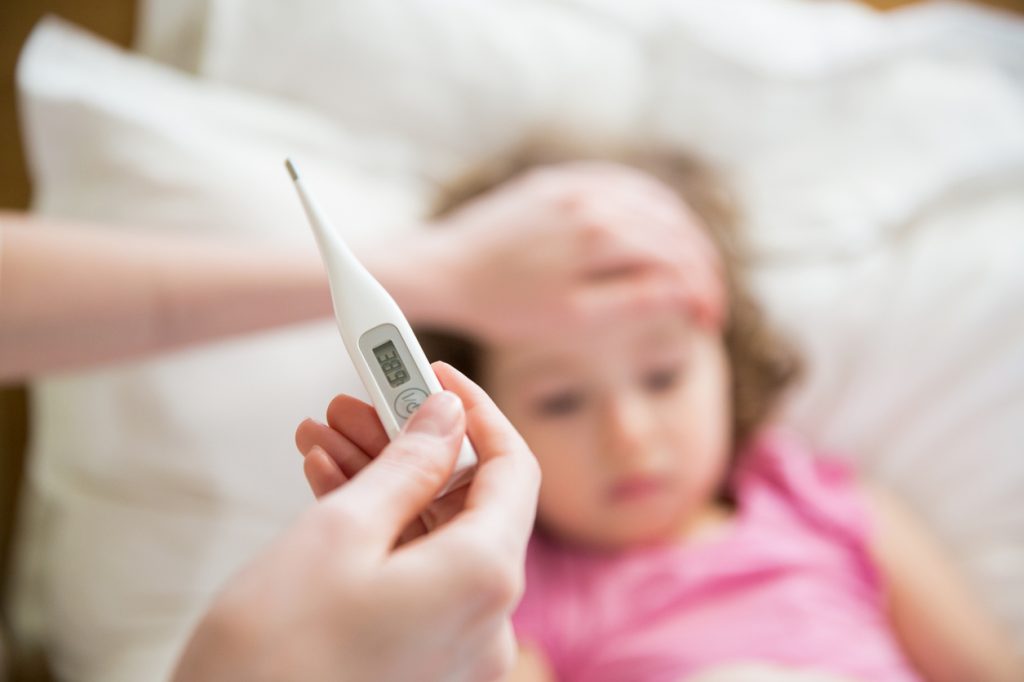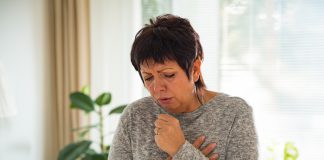Fever in Children

With flu season in full swing, we are seeing lots of unwell and feverish children. Here are some questions about child fevers to help parents through.
What causes a fever?
A fever occurs when the brain resets the body’s thermostat higher than the usual 37 degrees, causing the temperature to rise. This is usually in response to infection by a bacteria or virus.
Is any temperature above 37 a fever?
The exact definition of a fever varies, but it is more important to decide whether a child is unwell by how they look and behave than the exact number on the thermometer. Fever can affect everybody differently. Some kids are running around and playing with a temperature close to 40 degrees, while others are flat out on the couch at 38.5 degrees.
The majority of children with a fever have a viral illness. Only about 3% of children under 2 years with a temperature of 38.9 degrees will have a potentially serious bacterial infection.
However, this percentage rises to 15% in babies under six weeks of age, so younger babies with any fever should be assessed by a doctor as soon as possible.
Other children that should be seen more urgently include those with a medical condition or history which makes them more vulnerable to becoming seriously unwell.
Should my child see a doctor?
A common concern for parents is whether their child has a viral illness that they can fight off, or whether they are more unwell, maybe even need to be in hospital or worse still, have a life-threatening illness.
Your GP and GP nurse or staff at an urgent care clinic have a lot of experience in managing unwell children and should be your first port of call. Many parents also phone Healthline or the Plunket line which is able to offer some reassurance and advice. Hospital emergency departments are overloaded at this time of year, but never hesitate to attend hospital or call an ambulance if you feel your child needs to be seen urgently.
When it comes to assessing an unwell child, we rely on parents and caregivers to let us know what their concerns are and whether their child is acting normally. That’s why we always ask about eating and drinking, playing, sleeping and general mood.
It can be very helpful to seek advice and reassurance from a doctor or nurse as most parents caring for an unwell child are tired and anxious. Trust your gut instinct and never feel that you are wasting your doctor’s time.
What can I do at home?
There is a trend away from attempting to control all fever as it can be helpful in stimulating the body’s immune response. Paracetamol can be used if your child has pain, for example sore throat, headache, ear pain or sore muscles, but it has been found to be lacking in fever control.
A miserable child with a very high fever can have ibuprofen, but this shouldn’t be given on an empty stomach and not at all if the child is vomiting.
Cooling measures such as reduced clothing and cold flannels are a good idea, but a cold bath is overdoing it and shivering should be avoided.
What if my child is becoming more unwell?
Looking for signs of a more serious illness can help a parent decide if they need to see a doctor more urgently or after hours. It is important to recognise that children, especially infants, can become more unwell rapidly, so just because you saw your GP earlier in the day, it is not a reason to feel that you are overreacting by attending again.
Looking for colour change around the lips can be confusing because in small children the lips may appear somewhat purple during a fever due to poor circulation. Blue lips, or cyanosis, is a rare and late sign of breathing difficulty.
Dehydration can occur rapidly if a child has both diarrhoea and vomiting. Electrolyte replacement is needed instead of tap water.
Illnesses are becoming more serious if:
- They are very lethargic and sleepy, or start vomiting.
- They are struggling with their breathing, for example using their diaphragm or shoulder muscles to help the lungs inflate or sucking in the stomach with each breath. Breathing faster than normal or making a noise when breathing.
- If your child starts to refuse to drink. Refusing food is common when a child has a high fever, but fluid intake is very important as extra is needed during a fever or with rapid breathing.
- If they have a febrile seizure or convulsion. Even a brief febrile seizure is a very frightening event to observe and once a child has had a febrile seizure, your chances of having another one are increased. The peak age of incidence is around 18 months, so an older preschooler is unlikely to have one for the first time. There is often a family history but generally, it is unclear why some children are predisposed to having them, which makes predicting and preventing them difficult.
If you are worried about your child – get checked!
I recently looked after a child with menginccocal meningitis who thankfully has made a full recovery. His case was a helpful reminder that seriously unwell children generally don’t look seriously unwell. His initial presentation wasn’t unusual; a headache and some vomiting with only a mild fever of 37.6 and a normal pulse rate and blood pressure. He did not have a rash or even neck stiffness. However, his colour, inability to walk unaided and drowsiness made it obvious that he was critically unwell and needed urgent attention. Although doctors and nurses do years of training, we also learn to rely on observation and gut instinct. When you are caring for an unwell or feverish child this is the most important thing to remember.
Written by Dr Michaela Wood.







